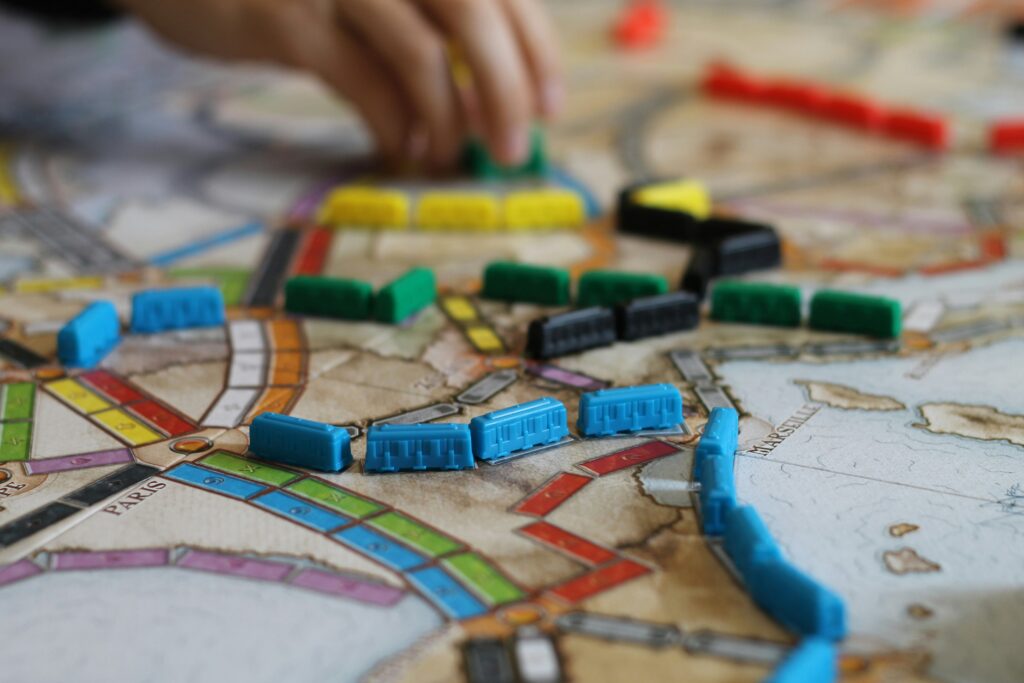Master the Art of Video Game Debugging
Welcome to “Master the Art of Video Game Debugging”! We’ve gathered here to explore the fascinating and intricate world of video game debugging. In this journey, we will delve into the essential tools and techniques that transform frustrating bugs into polished perfection. Together, we’ll uncover the secrets to identifying issues, analyzing code, and applying practical solutions. Let’s elevate our debugging skills and ensure that our games run smoothly, delivering the best possible experience to players around the globe. How do you debug a video game? It’s a question we often find ourselves asking, whether we’re seasoned developers or just starting out on our journey. Debugging can sometimes feel like solving a never-ending puzzle, but it’s an essential skill that can turn a problematic game into a polished masterpiece. In this article, we’ll walk you through the steps, techniques, and tools that can help you master the art of video game debugging. Let’s dive in!
Understanding Video Game Debugging
Debugging is the process of identifying and resolving issues or bugs within a software program. In the context of video games, this involves ensuring that the game runs smoothly, performs well, and provides a seamless experience for the player.
What is Debugging?
At its core, debugging is about problem-solving. It involves examining code, understanding why something isn’t working as expected, and then finding and implementing a solution. Debugging isn’t just about squashing bugs; it’s about improving the overall quality of the game.
Why is Debugging Important?
A well-debugged game enhances the player’s experience, reduces frustrations, and increases the likelihood of positive reviews and recommendations. Debugging ensures that the game mechanics work as intended, the graphics render correctly, and the overall gameplay is enjoyable and glitch-free.
The Debugging Process
Debugging can be broken down into a series of steps. By following these steps systematically, we can make the process less daunting and more manageable.
Step 1: Identify the Bug
The first step in debugging is recognizing that there is an issue. Bugs can manifest in various ways—crashes, visual glitches, gameplay errors, or performance issues. Players may report these problems, or we might encounter them during testing.
Questions to ask during this step:
- What exactly is the issue?
- When does it occur?
- Is it reproducible?
Step 2: Reproduce the Bug
Once we’ve identified a bug, the next step is to find a way to consistently reproduce it. This is crucial because it allows us to observe the bug in a controlled environment and understand the conditions under which it appears.
Step 3: Diagnose the Bug
Diagnosing the bug involves digging into the code to determine what’s causing the issue. This might involve:
- Reviewing the relevant sections of code.
- Running the game in a debugger.
- Adding log statements to track the flow of execution.
Step 4: Fix the Bug
Once we’ve diagnosed the problem, the next step is to implement a fix. This might mean changing the code logic, adjusting parameters, or reworking algorithms. The fix should be tested thoroughly to ensure it doesn’t introduce new issues.
Step 5: Test the Fix
After applying the fix, it’s crucial to test the game extensively to ensure the issue is resolved and no new bugs have been introduced. This should include:
- Retesting the specific scenario where the bug occurred.
- Running broader tests to ensure overall game stability.

Techniques for Effective Debugging
Beyond the basic steps, there are several techniques and best practices that can make debugging more efficient and effective.
Use Debugging Tools
Modern game development environments offer powerful debugging tools that can help us identify and fix issues more efficiently. Common tools include:
- Breakpoints and Watchpoints: These allow us to pause game execution at specific lines of code or watch the values of variables.
- Log Files: Logging can provide valuable insights into what the game is doing at various points, helping to diagnose issues.
Code Reviews
Regular code reviews can help catch potential issues early. By having a second pair of eyes look at our code, we can spot mistakes that we might have missed. Code reviews also promote better coding practices and knowledge sharing within the team.
Automated Testing
Automated testing involves writing scripts that test various parts of the game automatically. This can help catch regressions and ensure that existing functionality continues to work as expected after changes are made.
Profiling for Performance Bugs
Performance issues can be tricky to diagnose and fix. Profiling tools can help us understand where the game is spending most of its time, identify bottlenecks, and optimize performance.
Common Profiling Tools:
- Unity Profiler:
- Unreal Insights:
Memory Leak Detection
Memory leaks can lead to crashes and performance degradation. Using tools to detect and fix memory leaks is crucial for maintaining game stability.
Common Types of Bugs
Understanding the common types of bugs we might encounter can help us diagnose and fix them more effectively.
Logic Errors
These occur when the code doesn’t behave as intended, often due to a mistake in the logic or algorithms.
Syntax Errors
These are mistakes in the code that prevent it from compiling, such as missing semicolons or mismatched parentheses.
Runtime Errors
These occur while the game is running and can cause crashes or unexpected behavior.
Performance Issues
These include slow frame rates, long load times, and lag. They often require optimization of code, assets, or both.
Memory Leaks
These occur when the game doesn’t properly free up memory, leading to crashes or degraded performance over time.
Physics and Collision Bugs
These include issues with how objects interact in the game world, such as characters getting stuck or objects passing through each other.

Best Practices for Preventing Bugs
While debugging is essential, preventing bugs in the first place can save a lot of time and effort. Here are some best practices we can adopt.
Write Clean, Maintainable Code
Clean code is easier to read, understand, and debug. Following coding standards and best practices can help us write better code.
Use Version Control
Version control systems like Git allow us to track changes in our code, collaborate with team members, and roll back to previous versions if something goes wrong.
Regularly Test and Refactor
Regular testing helps catch bugs early, and refactoring keeps the codebase clean and efficient.
Document Code
Well-documented code makes it easier for us and others to understand and debug it.
Break Down Complex Systems
Breaking down complex systems into smaller, modular components can make them easier to develop, test, and debug.
Real-World Debugging Scenarios
Let’s walk through a couple of real-world debugging scenarios to illustrate the process and techniques we’ve discussed.
Scenario 1: The Game Crashes on Startup
Identifying the Bug:
Players report that the game crashes immediately upon startup.
Reproducing the Bug:
We try running the game on various platforms and configurations to see if we can reproduce the crash.
Diagnosing the Bug:
Using the debugger, we narrow down the issue to a specific function that initializes game assets. We add log statements and find that the crash occurs when loading a corrupt asset.
Fixing the Bug:
We replace the corrupt asset with a valid one and add error handling to catch and report asset loading errors in the future.
Testing the Fix:
We retest the game on multiple platforms to ensure the issue is resolved and check for any new issues that might have been introduced.
Scenario 2: Character Gets Stuck in Terrain
Identifying the Bug:
Players report that the main character occasionally gets stuck in the terrain.
Reproducing the Bug:
We play through the relevant sections of the game, trying various actions to reproduce the issue.
Diagnosing the Bug:
Using the debugger and physics visualization tools, we discover that the character collider is occasionally missing collision checks.
Fixing the Bug:
We adjust the collider settings and ensure that the collision detection code properly handles edge cases.
Testing the Fix:
We thoroughly test the terrain and character interactions, paying close attention to the areas where the issue was reported.

Debugging in Multiplayer Games
Debugging multiplayer games can be particularly challenging due to the complexity of networking and synchronization issues.
Network Latency and Lag
Network latency can cause desynchronization between players, leading to lag and other issues. To debug these, we can use network profiling tools to monitor latency and bandwidth usage.
Synchronization Issues
Problems can occur when game state isn’t correctly synchronized between clients and the server. Debugging these issues involves ensuring that all game state changes are correctly communicated and applied across all clients.
Collaboration and Communication
Effective debugging often requires collaboration and communication within the team. Here are some tips to ensure smooth collaboration.
Share Knowledge
Sharing knowledge about common issues and debugging techniques can help the entire team become more effective at debugging.
Document Bugs and Fixes
Keeping a detailed record of bugs and how they were fixed can help us and future developers understand and resolve similar issues more quickly.
Regular Stand-Ups
Regular team meetings, or stand-ups, can help keep everyone informed about ongoing issues and solutions, fostering a collaborative debugging environment.
Conclusion
Debugging is an essential skill in video game development. By following a systematic approach and using the techniques and best practices outlined in this article, we can tackle and resolve bugs more effectively. Remember, debugging is not just about fixing issues, but about continually improving the game and providing players with the best possible experience. Happy debugging!



